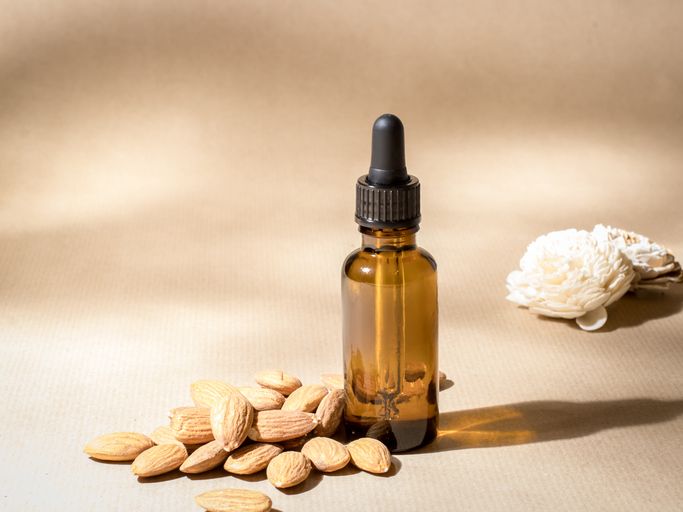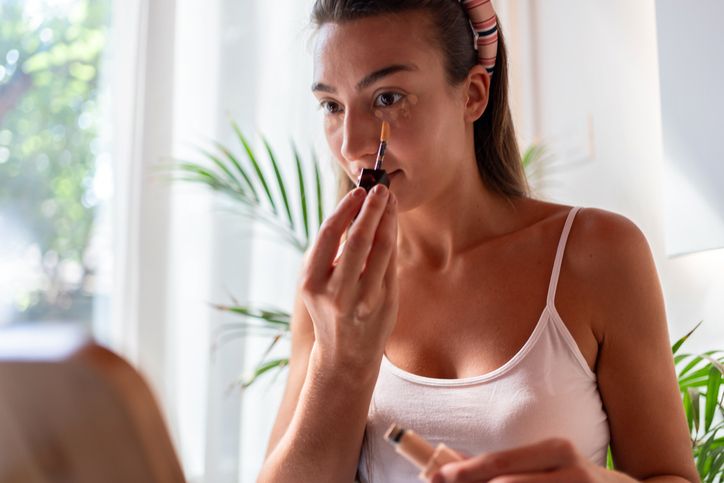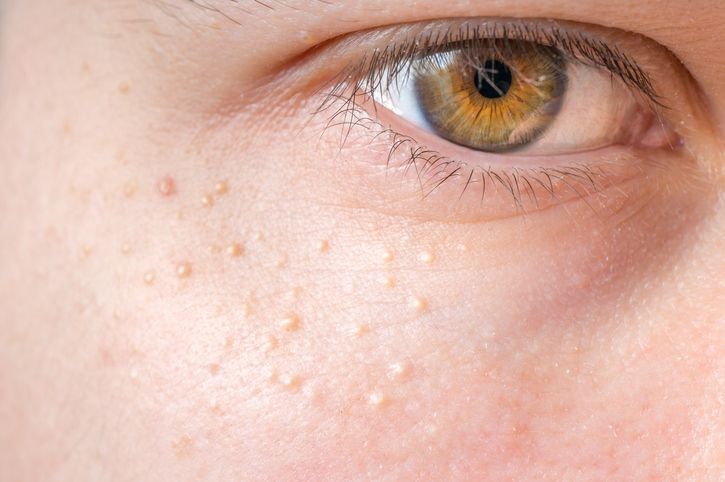- Home
- Trend
- Weight Loss Strategies
- Acne Tips
- Hair Health Information
- Blemish Removal Tips
- Acne Scar Removal Tips
- Muscle Building Techniques
- Intimate Care Tips
- Postpartum Intimate Care
- Eye Bags Wiki
- Tips for Face Slimming
- Secret of Permanent Hair Removal
- Breast Enlargement Tips
- Cure to Snoring
- Marionette Lines
- Skin-Tightening Secrets
Hair loss is a concern for many, affecting both men and women at different stages of life. While some cases of hair loss occur due to hereditary factors like androgenetic alopecia, others stem from medical conditions, hormonal changes, or lifestyle habits that weaken hair follicles. The good news is that hair loss prevention is possible with the right approach.
Spot the 5 Early Warning Signs of Hair Loss

Hair loss doesn’t happen overnight—it starts as a whisper, gradually becoming louder until it's impossible to ignore. Recognizing these early whispers can be the key to halting thinning hair before it turns into significant hair loss. Too often, people chalk up these subtle shifts to aging, ignoring the underlying issues that could be treated if caught early.
1. Excessive Hair Shedding
Do you find yourself cleaning out your hairbrush more often than not? While some hair shedding is a normal part of the hair’s growth cycle, consistently losing over 100 strands daily—especially after brushing or washing—could signal the onset of thinning hair.
This excess hair in your comb or clogging your shower drain may be more than just seasonal shedding; it could be the first hint that further hair loss is on the horizon.
2. Receding Hairline
Imagine your hairline like the shore of a beach, slowly receding as the tides pull back. For many men, male pattern baldness starts with a receding hairline, creating an M-shaped pattern that gradually exposes more forehead.
Women aren’t immune either—female pattern hair loss often shows up as widening at the crown, making ponytails look thinner. This creeping retreat is more than a cosmetic issue; it’s a call to arms to treat hair loss before it becomes significant.
3. Patchy Hair Loss
Small, circular bald spots are like crop circles on your scalp—mysterious and concerning. Often attributed to alopecia areata, these patchy hair loss areas occur when your immune system mistakenly targets its own hair follicles.
Unlike other types of hair loss, alopecia areata can strike suddenly, turning once lush landscapes into patchy prairies.
4. Weakened Hair Strands
If each strand of hair feels like a delicate thread threatening to snap, you’re likely dealing with weakened hair. Brittle hair prone to breakage is a red flag, often linked to nutritional deficiencies or the aftermath of harsh treatments like chemical dyes, hot oil treatments, or aggressive styling.
Healthy hair should have a bit of stretch and shine, so anything less is a sign it’s time to pamper your tresses.
5. Itchy or Irritated Scalp
An itchy scalp can be more than just a minor annoyance—it’s often the first sign of scalp inflammation that may lead to excessive hair loss. Conditions like seborrheic dermatitis or psoriasis can inflame the scalp, disrupting the hair’s growth cycle and pushing strands into an early resting phase. If you’re scratching more than usual, your scalp could be crying out for help.
When your hair starts sending distress signals, it’s time to listen and take action. Don’t wait until the whispers become roars—explore your treatment options today and secure your hair's future.
Build a Hair-Friendly Routine That Works
Caring for your hair goes beyond the occasional shampoo—it requires a consistent, well-balanced routine that supports scalp health, strengthens hair follicles, and retains moisture. Many people unknowingly engage in habits that weaken their hair, leading to excessive hair loss over time. By making small yet impactful changes, you can prevent hair loss and promote a healthier scalp environment for hair regrowth.
Best Practices for Hair Loss Prevention
1. Cleanse Wisely: Choose a Gentle Shampoo
Your shampoo plays a crucial role in maintaining hair health, but the wrong formula can do more harm than good. Many shampoos contain sulfates, which create a rich lather but strip away the scalp’s natural oils, leaving hair dry and brittle. Without these protective oils, your hair shaft becomes more susceptible to breakage and hair falls, potentially accelerating thinning hair.
For optimal hair loss prevention, choose a sulfate-free gentle shampoo that cleanses the scalp without irritation. If you have an underlying condition like seborrheic dermatitis, dandruff, or scalp psoriasis, look for medicated shampoos containing ingredients like ketoconazole or zinc pyrithione, which help maintain a balanced scalp environment.
2. Handle Wet Hair with Care
Wet hair is at its weakest due to the swelling of the hair shaft, making it prone to breakage and shedding. Many people make the mistake of aggressively towel-drying their wet hair, causing unnecessary stress on the strands. Instead of rubbing vigorously, gently pat hair dry with a microfiber towel to reduce friction and hair breakage.
If you prefer air drying, avoid brushing your wet hair immediately, as this can stretch and weaken the strands. Use a wide-tooth comb to gently detangle, starting from the ends and working your way up to minimize stress on the hair follicles.
3. Avoid Tight Hairstyles & Hair Extensions
While sleek ponytails and braids may look stylish, consistently pulling hair tightly can cause traction alopecia, a form of hair loss caused by prolonged tension on the scalp. This type of hair loss is common among those who frequently wear tight hairstyles, cornrows, or hair extensions that tug at the hair follicles.
Traction alopecia often starts with bald spots or thinning hair around the temples and hairline. If left untreated, scar tissue can develop, making it difficult for hair to regrow naturally. To prevent hair loss, opt for looser hairstyles and give your scalp time to recover between styles.
4. Reduce Heat Styling & UV Exposure
Excessive use of blow drying, curling irons, and straighteners weakens the hair shaft, leading to increased hair breakage and temporary hair loss. Heat strips moisture from the hair, causing dryness, split ends, and overall fragility. If heat styling is necessary, always apply a heat protectant spray to minimize damage.
Beyond styling tools, ultraviolet light from the sun can also weaken the hair structure. Prolonged sun exposure depletes essential nutrients from the hair follicles, increasing the risk of significant hair loss. Wearing a hat or using hair products with UV protection can shield your strands from damage and support hair loss prevention.
5. Limit Chemical Treatments & Focus on Scalp Nourishment
Many people rely on hot oil treatments, permanent dyes, and chemical relaxers to maintain a specific hair look. However, these treatments can disrupt the hair’s growth cycle, weaken strands, and trigger excessive hair loss.
For those experiencing female pattern baldness, male pattern baldness, or alopecia areata, reducing exposure to harsh chemicals is essential to slow hair loss and preserve existing hair. Instead of chemical-heavy treatments, focus on scalp nourishment through hydration, nutrient-rich serums, and dietary supplements that promote hair regrowth.
免費體驗
F8 Hair Regrowth Treatment
1 Minute Self-Registration
Date should not be before minimal date
Professional Hair Loss Treatments – Which One Is Right for You?

While home remedies and lifestyle changes can help slow hair loss, some individuals require medical treatments to address hereditary hair loss, autoimmune diseases, or other underlying conditions affecting their scalp health. The best hair loss treatment depends on the cause of hair loss, whether it’s androgenetic alopecia, alopecia areata, or temporary hair loss due to hormonal changes.
Popular Hair Loss Treatment Options
1. Topical Solutions: Minoxidil for Hair Regrowth
Minoxidil is one of the most widely used treatments for thinning hair and hair loss prevention. Approved by the FDA, this topical solution works by extending the anagen phase of the hair’s growth cycle, allowing more strands to remain in the growing hair stage for longer periods.
Minoxidil is effective for both men and women, helping to regrow hair in areas affected by male pattern baldness, female pattern baldness, and patchy hair loss. However, results take time—most users see visible improvement after four to six months of consistent application. Discontinuing treatment may lead to further hair loss, as the benefits are not permanent.
2. Prescription Medications: Finasteride for Androgenic Alopecia
For men experiencing male pattern hair loss, finasteride is a prescription medication that works by blocking dihydrotestosterone (DHT), the hormone responsible for androgenetic alopecia. By reducing DHT levels, finasteride helps prevent hair loss and can even encourage new hair growth in some cases.
However, finasteride is not recommended for female pattern hair loss, as it may interfere with hormone levels and cause unwanted side effects. Those considering this treatment should consult a doctor, especially if they have a family history of hormonal imbalances or medical conditions that could increase the risk of adverse reactions.
3. Laser Therapy: Stimulating Hair Follicles with Light Therapy
Low-level laser therapy (LLLT) is a non-invasive treatment designed to improve blood circulation in the scalp, ensuring hair follicles receive the essential nutrients needed for hair growth. This method helps revive dormant follicles, promoting thicker, healthier hair in individuals experiencing hereditary hair loss or thinning hair due to aging.
Among the most effective laser-based treatments, F8 Hair Regrowth Treatment stands out for its advanced approach to hair loss prevention. This medical-grade low-energy laser therapy works by reactivating weakened follicles, stimulating new hair growth, and reducing excessive hair loss. Unlike other methods, F8 combines laser therapy with a nutrient-rich growth serum that delivers targeted nourishment to the scalp, reinforcing hair density while preventing further hair loss.
F8 Hair Regrowth Treatment is suitable for both men and women dealing with patchy hair loss, receding hairlines, or hair thinning caused by hormonal changes, nutritional deficiencies, or medical conditions. It is also non-invasive, painless, and requires no downtime, making it an excellent option for those looking to regrow hair naturally while maintaining a healthy scalp.
4. Platelet-Rich Plasma (PRP) Therapy: Harnessing Growth Factors for Hair Restoration
PRP therapy is an innovative procedure that utilizes the patient’s own platelet-rich plasma to stimulate hair follicles. This process involves drawing a small amount of blood, processing it to isolate growth factors, and injecting the plasma into areas affected by significant hair loss.
PRP therapy has been shown to be effective for individuals with androgenetic alopecia, traction alopecia, and temporary hair loss caused by stress or nutritional deficiencies. The treatment works best when combined with early treatment strategies, such as dietary supplements and gentle scalp care.
The Impact of Diet and Supplements on Hair Health
Aside from treatment, your diet also plays a crucial role in hair health, as deficiencies in essential nutrients can contribute to nutrient deficiency-related hair loss. While some individuals experience temporary hair loss due to poor nutrition, others may develop significant hair loss if their body lacks key vitamins and minerals for extended periods.
5 Key Nutrients for Hair Growth
1. Iron
Iron is one of the most critical nutrients for hair growth, as it helps red blood cells carry oxygen to hair follicles. A deficiency in iron can lead to excessive hair loss, particularly in women due to menstruation, breastfeeding, or an iron-poor diet.
Studies have shown that low iron levels are linked to female pattern hair loss and thinning hair, making iron-rich foods like spinach, red meat, and lentils essential for hair loss prevention.
2. Biotin (Vitamin B7)
Biotin is a water-soluble B vitamin that supports keratin production, which is essential for strong, healthy hair.
Many people experiencing hair breakage or weak hair strands turn to biotin supplements, but the best way to get this nutrient is through a well-balanced diet. Foods like eggs, nuts, and sweet potatoes provide biotin naturally, reducing the risk of hair thinning.
3. Vitamin D
Low levels of vitamin D have been linked to alopecia areata and significant hair loss. This vitamin helps create new hair follicles, ensuring that the hair’s growth cycle continues uninterrupted.
A vitamin D deficiency can slow down new hair growth, making it harder to replace lost strands. Sun exposure, fatty fish, and fortified dairy products are excellent sources of vitamin D for those looking to treat hair loss naturally.
4. Protein
Since hair is primarily composed of keratin, a protein-rich diet is essential for hair strength and resilience. Individuals who consume insufficient protein may experience weakened hair strands, hair shedding, and difficulty growing hair.
Lean meats, fish, dairy, and plant-based proteins like quinoa and lentils can help prevent hair loss and support full head coverage.
5. Omega-3 Fatty Acids
Omega-3 fatty acids are known for their anti-inflammatory properties, which can help maintain a healthy scalp and promote hair growth. Since scalp inflammation can contribute to hair shedding, consuming foods like salmon, flaxseeds, and walnuts may improve scalp health and support hair follicles.
Many people turn to dietary supplements to regrow hair, but taking supplements without medical advice can sometimes do more harm than good. Over-supplementation of certain nutrients—such as vitamin A—has been linked to excessive hair loss, while unregulated supplement use may interfere with existing medical conditions or hormone levels. To maintain a healthy scalp and strong follicles, it’s essential to regulate dietary supplements wisely and prioritize a nutrient-rich diet.
Final Thoughts
To truly achieve stronger, healthier hair, a holistic approach is key. Nourishing your body with essential nutrients, maintaining a scalp-friendly hair care routine, and avoiding harsh treatments can help slow hair loss and support new hair growth. But for those experiencing significant hair loss or struggling with hereditary hair loss, adding an advanced treatment can make all the difference.
F8 Hair Regrowth Treatment offers a science-backed solution to enhance blood circulation, awaken dormant follicles, and protect against further hair loss—all without pain or downtime. When combined with a nutrient-rich diet, proper scalp care, and a balanced lifestyle, this treatment can maximize your hair’s potential for thicker, fuller regrowth.
Take control of your hair’s future today. Book an F8 Hair Regrowth Treatment session now and start your journey toward stronger, healthier hair!
F8 Hair Regrowth Treatment免費體驗
F8 Hair Regrowth Treatment
1 Minute Self-Registration
Date should not be before minimal date
FAQ

1. Why am I suddenly losing hair, and should I be concerned?
Sudden loss of hair can be caused by multiple factors, including stress, nutritional deficiencies, hormonal changes, or an underlying cause like thyroid disorders or autoimmune diseases. If you're losing hair rapidly and noticing thinning patches, it's best to consult a professional to determine the best treatment for your specific condition.
2. Does keeping short hair make it healthier?
While cutting your hair short doesn’t directly affect how hair grows, it can create the illusion of thicker, healthier hair by removing damaged ends and reducing breakage. However, maintaining hair healthy requires more than just a haircut—it’s essential to nourish the scalp, use gentle hair care products, and avoid excessive heat styling or harsh treatments.
3. What is the most common type of hair loss?
The most common type of hair loss is androgenetic alopecia, also known as male and female pattern baldness. It occurs due to genetic factors and hormonal changes, gradually causing thinning hair at the crown or a receding hairline. While it’s often hereditary, treatments like laser therapy, topical solutions, and professional scalp treatments can help slow progression.
4. Can hair regrow after significant hair loss?
Hair regrowth depends on the underlying cause of hair loss. If the cause is temporary—such as stress, dietary deficiencies, or certain medications—hair often grows back once the issue is resolved. However, in cases of genetic hair loss or severe follicle damage, treatments like low-level laser therapy (LLLT), F8 Hair Regrowth Treatment, and platelet-rich plasma (PRP) therapy may be necessary to stimulate new hair growth.
5. What is the best treatment for hair loss prevention?
The best treatment for preventing hair loss depends on its cause and severity. For mild cases, focusing on a nutrient-rich diet, reducing stress, and maintaining a healthy scalp can help. For more advanced cases, treatments like F8 Hair Regrowth Treatment, minoxidil, and PRP therapy can improve hair density and slow further loss. Combining medical treatments with proper hair care and lifestyle changes is often the most effective strategy.









